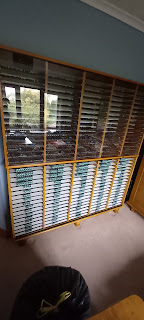THE CHINESE MOVE SOUTH.
Since its defeat by the UNION in 1870 and the loss of its southern territories the Chinese government had used every means to rebuild their army in order to recover the lost land and defeat the hated UNION. With Chinese industry only able to produce simple small arms and old fashioned muzzle loading artillery the government had sought to purchase modern weapons from other countries. This proved impossible with no European country being either able or willing to supply weapons. The Germans and Russians, past suppliers of weapons to China, were heavily engaged on building up their own armies and neither Britain or France had any enthusiasm for a rearmed China. However by 1888 the Chinese army had at last been rearmed, although not to modern standards, and many thousands of soldiers had been recruited and given various levels of training.
The attacks by Germany and Russia on the UNION had come as a surprise to the Chinese and they had watched carefully as the UNION fought for its life. As the battle raged with Germany the Chinese decided now was as good a time as ever to recover their lost territory. The UNION army was fully deployed against Germany and Russia and could have no troops left to defend southern China and in any case would they bother to defend a vast tract of empty land that clearly they had no intention of colonising anyway. The decision made, the Chinese army began the long trek towards Harbin to concentrate for a move south.
Over the following months the Chinese army moved slowly south from Harbin towards the border with the UNION. The Chinese were well aware that UNION cavalry patrolled the empty spaces of southern China. However they were confident that those patrols did not venture more than a hundred miles or more north of the border especially now as UNION forces were so heavily engaged fighting Germany and Russia there could be few spare troops available for such activities. By the summer of 1889 the Chinese army had advanced to within 120 miles of the border. The railway south from Harbin was being rebuilt and settlers from all over China were being encouraged to repopulate the vast spaces of the south.
On 26th June a UNION cavalry patrol, at the end of its loop through the empty lands of southern China , had spotted a dust cloud a few miles north. On investigation the UNION patrol was astonished to find large numbers of Chinese troops camped with signs of heavy movement further north. The Chinese were clearly returning to their southern lands, and in force. The patrol immediately reported its findings to Command and continued to monitor the Chinese.
By this time China had realised that the UNION had triumphed over Germany and Russia and was fearful of the UNION reaction to discovery of their move south. However they felt that with the huge army they now possessed and with the UNION probably exhausted after the wars with Germany and Russia they could perhaps withstand a battle with the UNION army sufficient to negotiate some sort of peace that would enable them to recover their lost lands. It all depended on defeating any UNION force sent against them so as to give them a position of strength from which to negotiate.
The discovery of the Chinese advance was very unwelcome news to the UNION government. The armies were exhausted and still in positions in Germany and Ukraine. The only UNION troops near China were units of 10th Reserve army. There were three infantry brigades, the cavalry brigade and the army command brigade either on the border or in Denver. These troops were ordered to concentrate on the border and then to move into China and engage the Chinese. Their instructions were to hold the Chinese advance until reinforcements arrived from the UNION armies still in the German Rhineland.
On 7th July the units of 10th Reserve army, totaling about 55,000 strong, crossed the border into China and advanced north. A few days later on 11th July the UNION forces were drawn up ready for battle only a few miles south of the advancing Chinese. The Chinese now knew for sure they had been discovered and determined to inflict the heaviest possible defeat on the UNION forces in front of them so as to achieve the strong negotiating position they thought they would need to secure the return of their southern lands.
















